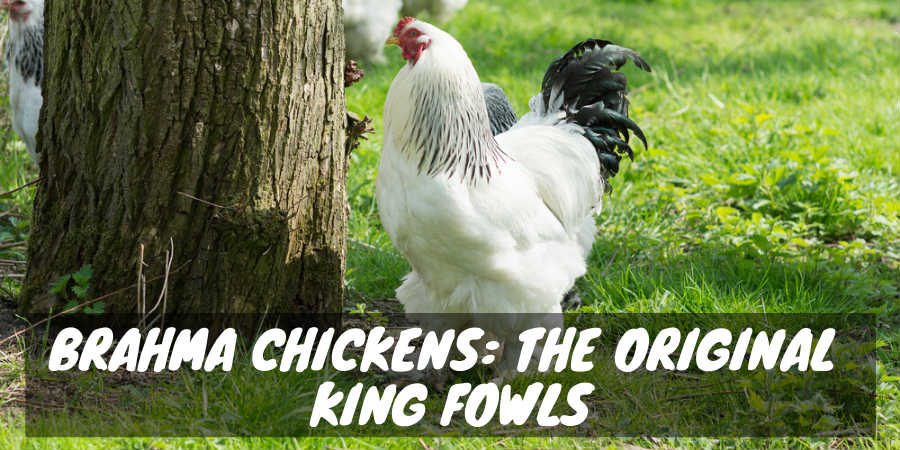Whether you want to buy rare chicken breeds from a hatchery or make a hatchery of your own for rare chicken breeds, there are few things you should know. What exactly falls under the category of a rare chicken breed and what should your hatchery be like to support them?
Read on to find what rare chicken breeds you can procure and how you should build your hatchery.
1. Ayam Cemani

Rare chicken breeds continue to be the most sought-after animal for chicken lovers. Many like to collect them and attempt to breed them to bolster their numbers. A successful breeding session can even sometimes land you an incredible payday.
One of the rarest chicken breeds is the Ayam Cemani. This breed is considered to be one of the most exotic chicken breeds in the world. They’re only ever sold in pairs to help increase its population.
When eaten in Asia, they believe that the meat can put one’s consciousness at ease.
What makes the Ayam Cemani so rare is its entirely black feathers. Along with their feathers, they even have black skin and black organs. You can typically find a single chicken going for $2,500.
Originating from Indonesia, the Ayam Cemani is capable of producing eggs. They typically lay around 60 eggs in a given year. Those who choose to slaughter the chicken and eat it consider the meat to be a delicacy.
In Indonesia, the Ayam Cemani is a sacred animal. It plays a big role in many of their myths and legends. They even believe that eating the chicken’s meat can cure some diseases or can give you good luck.
Breeders of this rare species are typically in America, Europe, and Indonesia. There’s an estimated amount of 3,500 left in existence.
In terms of behavior, Ayam Cemani are said to be friendly and likable. Their hens often go broody and make wonderful mothers. They also lay whitish-pink eggs that are medium in size.
They’re also considered to be docile and hardy through the winter. They also don’t have a difficult time integrating with other chickens.
While their eggs and meat are said to be delicious, most people acquire the Ayam Cemani in order to complete their collection of beautiful chickens.
2. Appenzeller Spitzhauben

The Appenzeller Spitzhauben is another rare breed of chicken. Spitzhauben means pointed bonnet. It’s an appropriate name for the chicken with its slightly odd bonnet-looking head.
One of the greatest aspects of the Appenzeller Spitzhauben is that it can actually survive on very little food. They’re incredible foragers, too. However, they are unnaturally good at flying. So, if you intend to own an Appenzeller Spitzhauben, then you’ll want to make sure their pen is enclosed.
The Appenzeller Spitzhauben originates from Switzerland. It’s a beloved chicken because of its rock star appearance. Its head sports a wicked mohawk that suggests it loves to headbang to the heaviest of metal tunes. Its splotched feathers also give it a punk sort of appearance.
Yet its name was given to them based on the traditional hats that Swiss women wore back in the 1500s.
A lot of cross-breeding has occurred with the Appenzeller Spitzhauben. That makes finding a purebred extremely difficult. Yet there are breeders who keep the line pure and authentic.
When you want to get your hands on an Appenzeller Spitzhauben, you’ll want to look for some of these common features. It has to have a forward-raking mohawk, blue leg color, and the roosters, in particular, must have a comb that’s not separated and split.
3. White-Faced Black Spanish Chicken

The White-Faced Black Spanish Chicken is one of the oldest known chicken breeds in the world. Despite its long ancestry, it has still managed to survive today–although barely.
It originally came from the Mediterranean, but chicken historians believe that this breed was one of the first, if not the first, of the rare chicken breeds to reach American shores.
It’s also said to have a large range of personalities. Some of them may be docile and friendly. Yet others might be flighty, mean, and aggressive. When you want to include a White-Faced Black Spanish Chicken to your flock, be aware that they might not migrate that well into your current flock.
They may not also be a great choice to have around if you have smaller children. Until you can determine what its personality is going to be like, you should supervise the chicken closely.
Breeding the White-Faced Black Spanish Chicken isn’t easy. Many breeders struggle to breed this species of chicken because they have difficulty in keeping the white-face of the chicken to the proportions that are acceptable for the species.
It’s supposed to look like a mask. Yet not every offspring will inherit this mask. You may have to go through a few broods before you can find an offspring that is considered eligible to be given the pedigree of a White-Faced Black Spanish Chicken.
Yet whether you’re breeding them or not, owning one can be great for any chicken collector.
4. Partridge Barthuhner
One problem that many chicken owners run into is helping their chickens survive the cold temperatures. That’s where the Partridge Barthuhner comes into play. This chicken was specifically bred to withstand cold temperatures.
It even grew a beard!
Its name translates to bearded chicken. The Partridge Barthuhner was first made in Switzerland. While it doesn’t have a crest, that beard makes it a sight all its own. Their feathers are also brightly hued.
This chicken bred is rare simply because there are only a few breeders in the world keeping them alive. For a chicken collector, your collection isn’t complete without the Partridge Barthuhner.
5. Transylvanian Naked Neck

While not the most beloved chicken due to its appearance, the Transylvanian Naked Neck is a must-have for all chicken collectors. It received its odd-looking neck due to a genetic mutation.
Because of its odd appearance, collectors have continued to want the Transylvanian Naked Neck to add to their numbers. One advantage that their naked neck has offered to them is the ability to be more resistant against hotter temperatures.
This breed came out of Romania and continues to be bred by those in Eastern Europe. In order to compete with your Transylvanian Naked Neck, its neck has to be completely bare.
Once you’ve collected your rare chicken breeds, you’ll need a hatchery to house them. Here are a few aspects that you should consider to keep your rare breeds healthy and safe.
Hatchery Requirements for Rare Chicken Breeds
The main purpose of a hatchery is to ensure that the hens have a safe place to lay their eggs, and then the eggs are kept safe and nurtured as well. For rare birds, you only have a small chance at hatching successfully.
To ensure your hatchery is prepared to house your rare chickens, you should first make sure that it has everything that they could need. Feed, water, and the temperature should all be considered. Depending on what birds you have in there, you may need a higher or lower temperature to keep them comfortable.
When they lay their eggs, however, those eggs should be cleaned and then placed in an incubator. The incubator is going to primarily warm to keep the baby chicken inside of the egg comfortable and healthy. The humidity should also be considered.
While you’re waiting for the eggs to hatch, you should turn them over time. A good rule of thumb is to turn the eggs until the third before it’s supposed to hatch. This helps the chick inside orient itself, so it knows where to exit from the egg.
You’ll need to keep the temperature in the hatching unit optimum for each breed’s egg.
It’s possible to own rare chicken breeds and to hatch them yourself.




